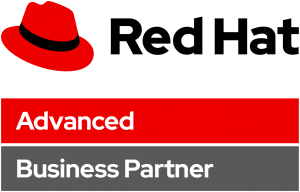Financial Institution speed up Digital Innovation with iZeno and CloudBees solutions
Introduction
The successful financial service provider implementation was a feather in iZeno’s cap and underscores the company’s ability to architect and deliver impactful solutions and cemented its position as a trusted partner to enterprises in the digital era.
The financial service provider was one of the largest in APAC and had achieved good long-term returns through its investments in developed and emerging market equities, nominal bonds and cash, inflation-linked bonds, private equity, and real estate. As the investment portfolio grows, the company wanted to enhance its operations to become more agile as part of its digital transformation strategy. This comes during a time when financial institutions globally are building their digital foundation modernising their tech stacks and moving their applications to the cloud.
The company’s applications were running on virtual machines with different standards of libraries, components and security protocols, which led to huge operational issues and greatly impeded agility. It was unable to innovate or deploy new features and functions fast enough to adapt to internal and external demands.
What our customer needed?
To overcome these challenges, there was a critical need to modernise the technologies and processes to tackle key concerns of reduction of long-term operations costs, improvement of process efficiencies and enhancement of security.
The company carried out a feasibility study and decided that a Microservices Architecture and Container Platform was best suited to address these challenges while simultaneously providing a platform to speed up digital innovation.
“The customer wanted to subcontract their IT operations and relinquish their physical VM servers and footprint in the data centres. The plan was to move their legacy monolithic applications into a microservices architecture and modernise their apps by migrating them to a container platform,” said Nicholas Lim, Regional Sales Director, iZeno, describing the customer’s digital transformation strategy.
“Secondly, they also wanted to minimise the spend on IT infrastructure and use the cost savings to drive innovation.”
“From a business perspective, a nimble IT architecture can enable the company to respond more quickly to opportunities and make better-informed decisions.”
Why we took a different approach?
Lim said a key issue iZeno highlighted was the potential pitfalls if the customer moved to multiple clouds when they were not ready. The team shared examples of ‘what could have gone wrong’, or ‘what could go wrong’ if they followed the original tender requirements.
“We went against the grain and felt a different approach was necessary. We showed grit and determination to propose ‘What is right for the customer’ versus offering a ‘standard industry stack’.
He added that another key consideration was the customer did not have a large IT team and wanted an experienced partner with a clear strategy. The company was embarking on new technology stack for the first time and as such, they needed a trustworthy and dependable partner with the knowledge and expertise to support them for the long haul. The deployment was expected to last a minimum of five years for the migration to be complete and a strong and collaborative working relationship between the two parties was critical.
Discussing the rationale for iZeno’s approach, Lim said the move to the cloud should be seen as a long-term strategy from the customer perspective – thus the platform must be built to be sustainable, predictable, reliable and scalable. The IT architecture must also last over the next 10 years and be future-proof. “I believe what stood out for iZeno was that we were uniquely able to help craft the journey to reach their end goal. We were very clear in terms of the end goal for our customer.”
iZeno was commissioned as the partner to carry out the project not only due to technical proficiency and extensive experience in developing container technology and microservices architecture but also because of iZeno’s ability to understand, redefine and augment the customer’s existing DevOps practices and framework.
The cloud solution iZeno used was Red Hat’s OpenShift container platform managed as a platform as a service (PaaS) by both Amazon Web Services (AWS) and Red Hat. Besides Red Hat Open Shift and AWS cloud, Other solutions deployed included Red Hat Ansible, CloudBees Core and Flow, Prisma by Palo Alto, JFrog Artifactory, SonarQube and CyberArk.
Our wining factors
iZeno implemented the solution based on 3 key principles; standardization, reusability, and governance. Standardization ensures that the approach follows a set of blueprints based on defined programming language as well as the usage of the proper build and deployment process. Reusability enables the customer to utilize some of their existing tools and processes to be part of the solution while governance ensures that existing approval and security are implemented at the core process.
These key principles of governance and security play an important role and have always been a part of the core design. iZeno implemented Cloudbees ARO pipeline and embedded all the governance, security, and control in a single place for the release process, integrated tightly with the continuous integration process with CloudBees CI. With this implementation, developers can be agile and have less dependency on the operation team, while giving the ability to also implement a shift left approach. This provides strong control for the overall development and deployment principles.
“It was about helping them to find a DevOps strategy that can shorten the application lifecycle and accelerate the development process,” said Lim. “We did an assessment and gave our counsel based on best practices that we’ve learnt from other financial institutions. The customer was impressed by our guidance and appreciated our feedback.”
Lim explained that a successful deployment also required more than a simple lift and shift of their applications from on-premise to the cloud. iZeno had to assess the complexity of the application and make sure the application container was ready and viable to reside on a container platform.
When the project started the initial plan was to move five key applications onto the container platform. Since going live, the number has expanded further. iZeno has already onboarded 10+ applications and is now looking to bring in more than one hundred additional applications onto Red Hat’s OpenShift Container Platform.
“Being able to make changes early on in the development cycle helps the company optimise its resources and allow any additional cost savings to be further invested in innovation.”
Deddy Johari, Technology Director at iZeno
Clear customer benefits
The financial service company has not only experienced exponential application performance and resiliency, but is now able to rapidly develop and maintain applications and business solutions in a more efficient, secure and scalable way. Ultimately, there was an increase in operational efficiency, faster speed to market in decision making and greater flexibility.
“Our customer had to follow an extended governance framework to make sure assets that are being moved to the cloud comply with existing regulations and security guidelines,” said Deddy Johari, Technology Director, iZeno.
To make sure that the governance and compliance approvals do not slow development, iZeno focused on a Continuous Integration and Continuous Delivery/Deployment (CICD) model to minimise any disruption in the software development.
At the core of continuous delivery is the automation of software delivery activities such as building, testing and deployment. Key to the speed and success of the implementation was the use of the CloudBees software delivery platform to enable flexible role-based access controls and quick turnaround of work processes – from the first introduction of any code change to becoming production-ready while ensuring security and governance.
Using CloudBees and a progressive delivery model also helps the company discover needs and conflicts early, catch bugs and vulnerabilities before the full release and make adjustments and resolve issues along the way.
“The benefits of using an agile continuous delivery tool include reducing the company’s time-to-market, cutting down development costs and gaining a competitive advantage,” explained Johari.
The iZeno team has to date overseen three stages of deployment. The first was to move the applications onto the AWS cloud. The second was to make them container-ready or to refactor and re-platform them if they were not. The container applications are also more resilient as the OpenShift Container Platform could automatically increase or decrease based on the workloads or deployment configuration.
At the same time, iZeno is also now in the third phase of Day 2 operations and focused on maintaining, monitoring and optimising the applications.
“What we’re doing is modernising their applications to make sure that they’re resilient and scalable. In a monolithic architecture, when you make a change, you need to shut down the application and probably wait months before you can bring the application up again,” said Lim.
However, using a microservices architecture, the financial service provider can continue operating and not need to shut any application at all.
“Many enterprises are realising that downtime in an application could mean huge financial setbacks, and the shift is towards a microservices architecture where they can build or shut down the application and make changes or improvements in real-time.
With enterprises creating digital business platforms today, app-based services have become the norm and are widely accepted. Ultimately, the benefits include better operational efficiency, business agility and improved TCO. From a cost perspective, a Microservices architecture can save the company a lot of money.”
Nicholas Lim, Regional Sales Director at iZeno

CloudBees Elevate | Vista Partner
CloudBees delivers solutions for continuous delivery of software services. CloudBees is a PaaS (Platform as a Service) that provides services through solutions such as DEV@cloud and RUN@cloud. From their initial creation, CloudBees has grown to support the entire application life cycle from development to deployment. As a trusted partner, our experts can configure and deliver the full suite of CloudBees technologies to meet your needs.

Red Hat Advanced Solution Partner
As Red Hat Advanced Partner of the year, iZeno Certified Red Hat and DevOps experts in Singapore, Malaysia, Thailand and Indonesia can help your enterprise leverage on Red Hat Open Shift, Red Hat Ansible Automation platform, Red Hat OpenStack platform and Red Hat Cloud forms. We help our enterprise clients to take full advantage of the cloud and package their applications with containers, embrace modern architectures using agile techniques.
